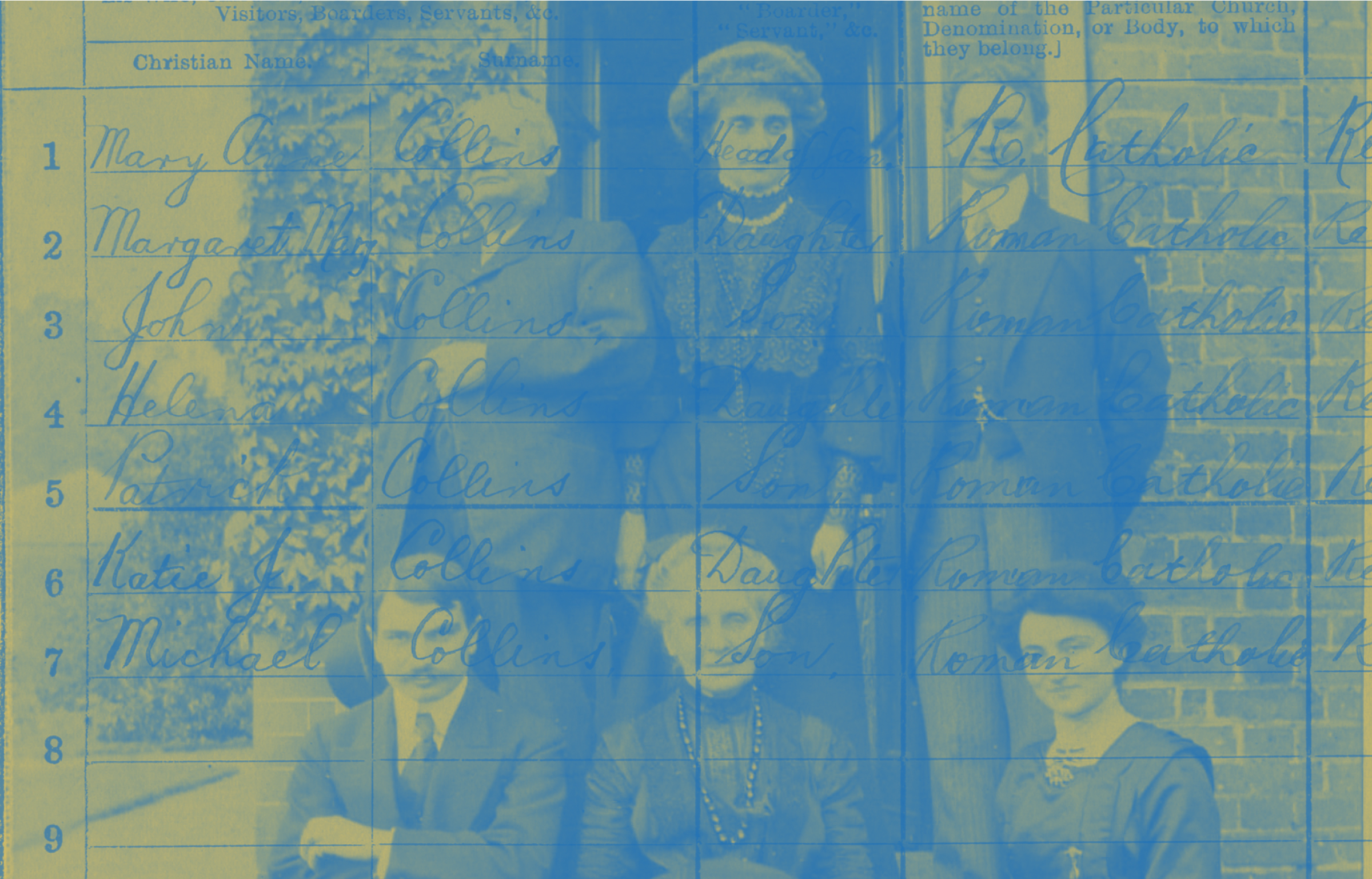The 1901 census was taken on 31st March 1901. It provides a detailed snapshot of the population at that time.
The most popular records in the National Archives are the household census returns for 1901 and 1911. Many people consult them when researching their family history, and they are also an important source for social, economic and cultural history.
Original household manuscript returns
Ireland is unique among English-speaking countries that conduct censuses because the original household manuscript returns have survived. These are the forms filled out and signed by the head of each household on census night. In most other countries, only the enumerators’ books, where family details were transcribed by the census collector, have survived.
What does the 1901 census contain?
The 1901 census lists each household members name, age, sex, relationship to the head of the household, religion, occupation, marital status and place of birth.
The returns are organised by townland or street and list every member of each household, including:
- Name
- Age
- Sex
- Relationship to the head of the household
- Religion
- Occupation
- Marital status
- County or country of birth
Additionally, the census records an individual’s literacy and ability to speak the Irish language. This information is captured on Form A, which is filled in and signed by the head of each household. If the head of the household could not write, their mark, usually an “X,” was recorded and witnessed by the enumerator.
The census also includes returns for various institutions:
- Form B3: Shipping return
- Form C: Return of the sick at their own homes
- Form D: Return of lunatics and idiots not in institutions
- Form E: Workhouse return
- Form F: Hospital return
- Form G: College and Boarding-School return
- Form H: Barrack return
- Form I: Return of Idiots and Lunatics in institutions
- Form K: Prison return
Details about houses are also recorded, including:
- Number of windows
- Type of roof
- Number of rooms
- Overall condition
Additionally, the census notes the number of out-offices and farm buildings attached to each household.
In 1901, technology for data collection was quite basic compared to today’s standards. The census data was collected manually by enumerators who visited each household.
A snapshot of households
The 1901 Census of Ireland is a treasure trove of historical information, capturing a snapshot of the lives of many notable individuals. Here are a few interesting people you might find:
James Joyce: At the time of the 1901 Census, the future literary giant was living with his family in Clontarf, Dublin. Joyce would go on to write some of the most influential works of the 20th century, including “Ulysses” and “A Portrait of the Artist as a Young Man”.
Padraig Pearse: A key figure in the Irish independence movement, Pearse was a 21-year-old law student living in Dublin. He later became a leader of the 1916 Easter Rising and a signatory of the Proclamation of the Irish Republic.
Thomas Clarke: Known for his role in the 1916 Easter Rising, Clarke was a veteran revolutionary who had spent years in prison for his activities. By 1901, he had returned to Ireland and was deeply involved in the nationalist movement.
Anna and Thomas Haslam: This Quaker couple were prominent activists in the fight for women’s suffrage in Ireland. In 1901, they were living in Rathmines, Dublin, and continued to advocate for women’s rights well into their later years.
Douglas Hyde: The future first President of Ireland, Hyde was a scholar and a key figure in the Gaelic revival. His work in promoting the Irish language and culture was instrumental in shaping modern Irish identity.
These individuals, among many others, provide a fascinating glimpse into the diverse and dynamic society of early 20th century Ireland. The 1901 Census not only records their personal details but also reflects the broader social and political currents of the time.
